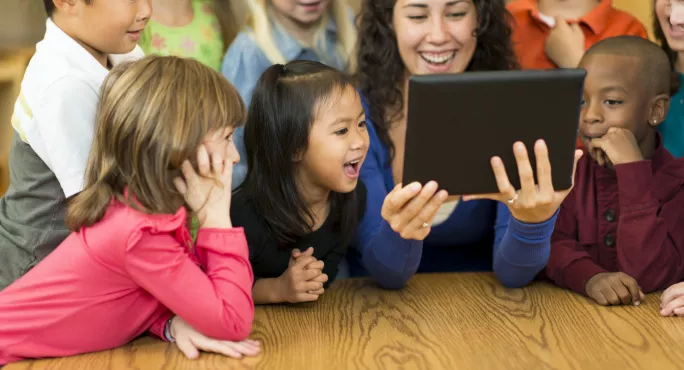“Once upon a time…”
Storytelling is the oldest form of entertainment.
Reciting stories is one of the most natural forms of communication; we all tell stories daily, as we share anecdotes with our friends and families.
Quick read: 10 top tips for teaching creative writing
Quick listen: Inference: why comprehension is not just about vocabulary and knowledge
Want to know more? EduTubers: will they really change how you teach?
So, as we leap into the “future” (when I was at school, I wrote stories about how I imagined the world in the year 2020), how can we make storytelling appeal to our young learners?
One option that I have been using for my students at Agora Lledó International School in Castellón, Spain, is digital stories.
I have found them to be a lifesaver for my mixed-ability, mixed-nationality classes.
These stories allow students to improve their pronunciation and be creative.
They teach Gardner’s multiple intelligences in a single activity, and combine modern technologies and language learning.
Best of all, they are easier than you might think to create.
How to make digital stories
- I create digital stories using my mobile phone and a laptop.
Firstly, I get my students to either take photos, illustrate the stories themselves or colour pages from stories I have either got someone to draw for me (I’m useless at art) or downloaded from the internet.
- I get my students to repeat the different sentences that tell the story, either individually or in chorus, while I record them on my mobile phone.
In the past, I have been lucky to get my students to record their stories individually with the language conversational assistant or during my free periods. But if this hasn’t been possible, I have told them to maintain complete silence while in the “recording studio”.
- Once I have the images and recordings, I begin editing using PowerPoint. To insert the images, I usually scan the students´ pictures using the school photocopier, which automatically sends the images to my computer.
If you don’t have this option, you can photograph them and upload them to your computer before inserting them into the PowerPoint file using the insert-image option.
- To insert the audio, you click on the multimedia icon and scroll along to the audio option. From here you can choose either to add a recording from your PC or to record live.
I always insert the recordings from my phone, but a live recording could save time and the mess of matching the images to their correct soundtrack.
And there you have it - your first digital story with accompanying soundtrack. Once complete, I usually email our creation to the students’ families.
Lucy Durance is infant and primary language coordinator and reading community coordinator at Ágora Lledó International School in Castellón, Spain

